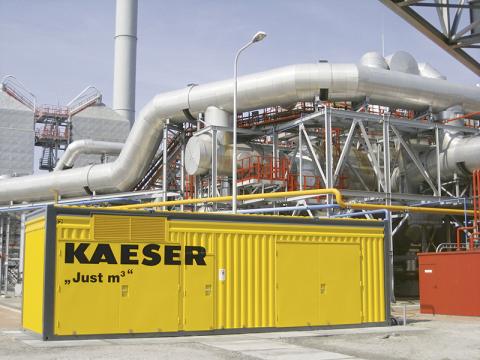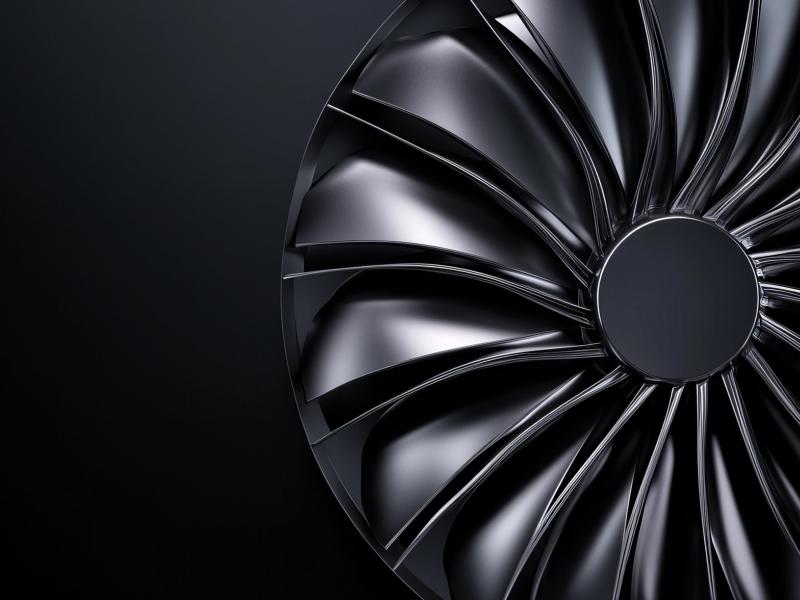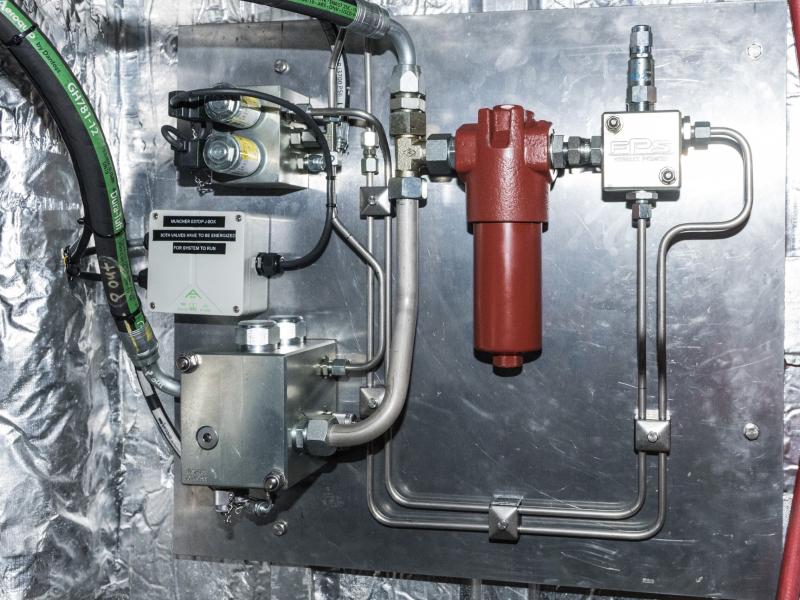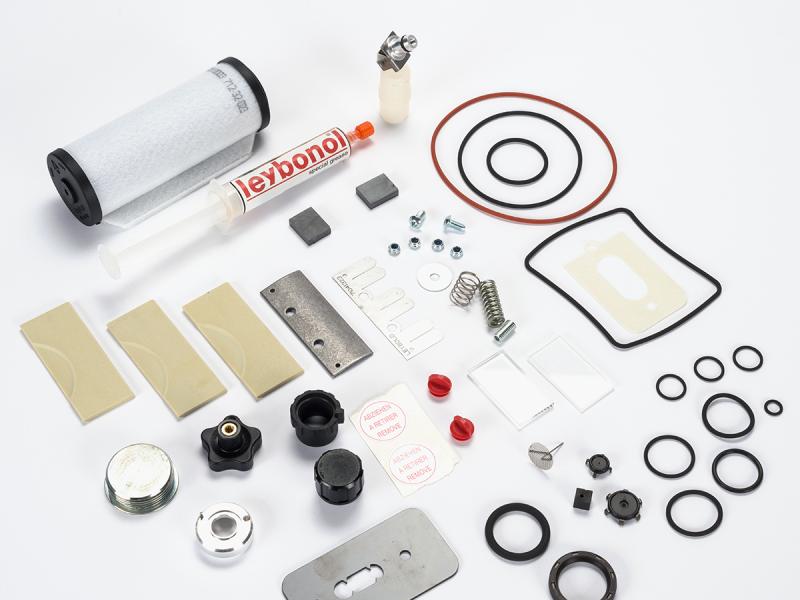There are some situations where a mobile compressed air supply system solution is required. Here, container solutions can offer the same efficiency, economy and reliability of a permanently installed station but in a lean and flexible model. Moreover, they are available in a vast range of configurations to meet every compressed air need.
Container stations: Compressed air when- and wherever it is needed
Container solutions offer an almost limitless range of possibilities, whether as prefabricated systems that can be deployed on site at short notice, or as custom-tailored systems that are configured and designed to meet an operator's specific requirements. They can also be used as a temporary solution to bridge compressed air bottlenecks, as an interim solution or as a permanently installed solution. Whether owned, rented or implemented on the basis of an operator model, their design is as versatile as their potential fields of application. Container solutions can be adapted to meet any need, including mining, offshore oil platforms, hot desert environments and every conceivable category of industrial production. Comfortable even in harsh conditions, they can be operated in temperature ranges from -20 °C to +45 °C.
One of the core advantages of these container solutions is that they can be installed almost anywhere on site, ready for operation, with reduced costs and minimised set-up time. This is particularly valuable when space is at a premium, or if a company is undergoing expansion, for example, and space is tight, since they can be placed next to an existing building. They are also an interesting alternative as a supplement to an existing station or as a replacement for it. If, for example, the room in which the compressed air supply was previously located is required for production purposes due to capacity expansion, a container that is installed outside the building can free up available space within the building.
As with spatially integrated stations, containers can be set up at different points throughout the plant and still be connected to one another.
Ready-to-run solutions
The quickest option is to use prefabricated container solutions, such as Kaeser’s Contain-Air units. These ready-to-run solutions are ideal, particularly when it comes to bridging short-term compressed air bottlenecks or as an option if a station needs to be converted or maintained, as they are also readily available on a rental basis at short notice.
Mobile and space-saving, these containers house a complete compressed air station that provides a quiet and dependable supply of quality compressed air when- and wherever it is needed. Standard container dimensions moreover guarantee rapid and straightforward transportation of these "plug-and-play" stations.
Thanks to an easy-to-use connector panel for pipes and cables, the container station can be put into immediate operation virtually anywhere, and can be up-and-running exceptionally quickly in the event of an operational emergency. Since the container features sophisticated soundproofing, it can be operated in city centres or in the vicinity of office or residential buildings without issue. Furthermore, insulation and heating ensure that the station can be used in almost all temperature and weather conditions.
Should more compressed air be required than a single station can supply, it is possible to connect several of these prefabricated container stations in parallel and therefore cover almost any compressed air demand.
Customised solutions
Operators with special requirements for compressed air quality and volume can opt for a customised container solution, as offered by leading compressed air systems providers. For this variant, like with planning for any compressed air supply, actual demand and the application for which the compressed air is being used determine system design and the type of components that are to be used in the resulting container station. All compressed air station planning should therefore be performed by specially trained engineers in close consultation with the station operator. Professional expertise is important not because it is a case of simply placing a compressor in a container, but because there are many other aspects to consider when designing a system like this. Starting with the already-mentioned matching of components, the process also involves planning for piping, cooling, heating, the controller with monitoring and much more. During this phase, in addition to the required operating parameters, the prevailing environmental conditions such as temperature, dust exposure, humidity and other specific characteristics are also scrutinised in detail.
In an ideal case, the container itself is an insulated steel container that is statically designed in such a way that it can be lifted at the corners. It is completely piped and wired and includes a control cabinet with power distribution, an automatic ventilation system, heating and lighting. The precise implementation, however, depends on the respective operator's wishes and requirements.
Insulation is necessary for several reasons. One of the most important - especially if the container is to be placed in populated areas for example - is soundproofing. Compressors, dryers and above all fans for ventilation generate noise. Effective and well thought-out insulation is therefore needed to ensure that this noise does not propagate outwards excessively and that all required specifications and stipulations are met.
Insulation is also important if ambient temperatures are not constantly in a range that is optimal for compressed air generation. When temperatures outside are below 0 °C, the temperature inside the container should not drop below +3 °C to ensure that any condensate does not freeze and the viscosity of the oil in the components, for example, is maintained. This is where a standstill heater can help. Conversely, the same principle applies to hot temperatures, where an effective ventilation and cooling concept plays a major role in ensuring consistently high efficiency, economy and compressed air generation performance.
Special consideration should also be given to environmental aspects. For example, the container floors should be able to be designed to act as an oil-tight pan so that harmful substances cannot seep into the ground. It also goes without saying that ecologically-responsible drainage of any condensate that may occur inside is also important.
Operators who opt for a container solution are well advised to ensure that the provider has tested the completed station before delivery to confirm that the configuration works correctly and the station can therefore be operated immediately following installation at the factory premises.
Even stronger together
Just like their standard counterparts, customised container solutions can also be combined. In this case, care should be taken to ensure that they can be operated both individually and in combination with one another. This is made possible by a master controller such as the Sigma Air Manager 4.0.
The master controller for all compressed air generation and treatment components not only controls and monitors the individual components or containers, but also optimises pressure performance, among other aspects, automatically adjusts compressed air station delivery rate in the event of fluctuating compressed air demand, optimises energy efficiency based on control losses, switching losses and pressure flexibility and also provides compressed air station capability for services such as predictive maintenance. Up-to-the-minute key figures for energy data are also generated and provide the basis for energy management according to ISO 50001. This not only enhances operational reliability and efficiency, but also reduces energy costs. And, the controller can of course also be integrated with an operators' existing control systems.
Save money with heat recovery
As self-contained complete systems, modern rotary screw compressors, boosters and blowers are particularly well suited for heat recovery and the same applies for container stations.
In particular, direct use of waste heat via an exhaust air duct system opens up considerable potential for recycling of used energy. The heated cooling air from the compressor can be used easily and effectively to heat neighbouring rooms via ventilation ducts, for example. Up to 96 percent of the electrical power supplied to a compressor can be used for space or process heating, which in turn saves costs and energy thereby increasing profitability.
The compressor waste heat can also be used to generate hot water. Depending on the type of compressor, this brings further potential for significant savings.
All-round care in a package
Operators who do not wish to maintain the station themselves can also have it monitored remotely. This is possible if the station has an appropriately capable management system. If it does, then the operator can enter into the world of predictive maintenance. This feature enables far more than optimum operator-tailored station control. By monitoring key figures such as service costs, reserve level and specific package input power, the user is presented with a holistic view of the compressed air system. This ultimately leads to reduced compressed air generation and operating costs, as well as improved compressed air availability. In addition, compressed air system energy and life cycle management is possible throughout the station's entire service life.
Real-time data management combines expert knowledge with predictive service to create intelligent solutions. This makes it possible to provide maximum compressed air supply at low life cycle costs without the need for additional investment. Innovative compressed air solutions providers are able to offer this service and are happy to help anyone who is interested by giving them all of the information they need.
Pay only for the compressed air
Operators who wish to go one step further no longer purchase the entire compressed air station, but enter into a contract with the provider - and it goes without saying that this is also the case for container stations. In this arrangement, the operator simply receives compressed air in the same way as a common utility, such as electricity, and pays only for the actual volume of compressed air consumed.
Conclusion
Container solutions are a sensible alternative when things need to be done in a hurry, where space is tight or if there is a particular special requirement. They can usually be installed without special permits, are easy to operate and offer the same performance as a station housed inside a building. And if the plant layout of a production company changes, then the container can simply be moved or expanded with security of investment in mind. For more information visit nz.kaeser.com or phone 0800 447 820.







